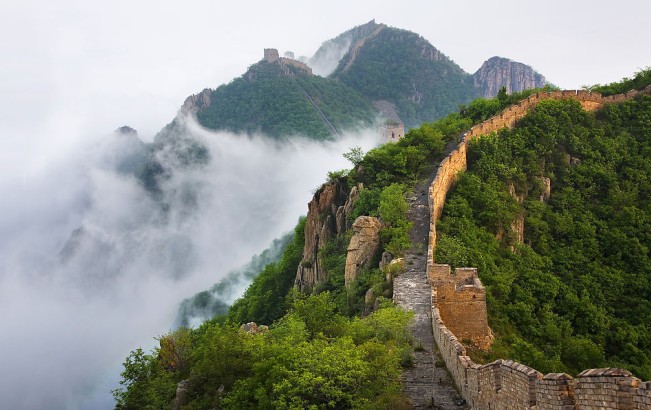Ancient City Wall is the first landmark that you will encounter in Xi’an which stretches all round the old city. The northern side of it runs to the parallel of the railway. Xi’an was called a walled city originally and even today, the ancient city wall is considered as a main landmark which divides the city into the inner and the outer part. This city wall is massive, long, tall and thick. The North Gate and the South Gate are the two main Gates for entering into the city and the city is very neatly arrange along this city wall.
Xi’an Ancient City Wall was erected in 14th century under the Ming Dynasty during the regime of the Emperor Zhu Yuanzhang. When Huizhou was captured by Zhu Yuanzhang, before the establishment of Ming Dynasty, he was very much influenced by the hermit, Zhu Shen who told him to build the high walls. When the whole country was unified, the emperor sends order for building the city walls. The current wall in the city is the enhancement of the old structure of Tang Dynasty.
The city wall at first was built of earth which was rammed one layer upon another layer. Base of this layer was made up of earth, glutinous rice extracts and quick lime tamped together. This made the wall firm and strong. Later on, the wall was enclosed with the bricks totally. A moat, deep and wide ran around the city and over the moat, there was a huge drawbridge. It cut off the way out and in of the city when lifted.
After the enlargement of the Xian’s city wall in the Ming Dynasty it stands about 12 meters high. It was about 12-14 meters across the top, thickness of 15-18 meters at the bottom and about 14 kilometers in length. There was a rampart after every 120 meters. These ramparts are the towers which extend out from main wall. The ramparts allowed the soldiers to see their enemies who try to climb the wall and allowed soldiers to protect wall without being exposed to the enemy. These ramparts are total 98 in number and each one having sentry building on the top of it.
There are gates of the city wall which are the only way to get into or out of the town. There are four gates in each of the four directions and each has three towers. The gate tower is used to lower and lift the drawbridge. The narrow tower is in the middle which was used to shoot the arrow using the square window and the main tower forms the way for entrance to the city. It also has tunnels and watch towers which was used by the soldiers for the protection of the city from enemies.





















